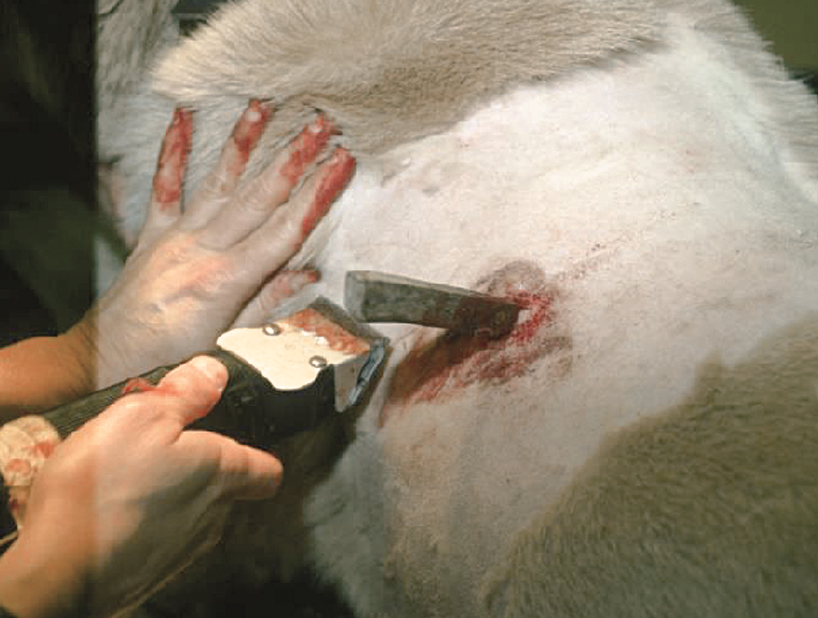Small Animal Emergency and Critical Care Medicine: Self-Assessment Color Review, Second Edition, Q&A 14
| This question was provided by CRC Press. See more case-based flashcards |

|
Student tip: This case is an example of a novel situation that requires lateral thinking. |
A 5-year-old male German Shepherd Dog presented approximately 10 minutes after being stabbed in the chest. The owner had tied the dog outside a mini market for 5 minutes and returned to find the dog standing with a knife in his side (see image). Small drops of blood were found on the dog’s hairs and and on the side-walk. T = 38.4°C (101.2°F); HR = 160 bpm; RR = panting; CRT = 1 sec; MM dark pink, dry; skin turgor normal; femoral pulses bounding. The entire knife blade is firmly embedded in the chest. No other external wounds visible.
| Question | Answer | Article | |
| Provide general guidelines for the transport of an animal with a penetrating foreign body. | The owners should be instructed NOT to remove the foreign object. If the handle portion of the object is excessively long (e.g. an arrow) a portion may be clipped to prevent further damage. The dog should be gently restrained to prevent the object moving and entering the body further.
|
Link to Article | |
| Provide an initial diagnostic and therapeutic plan for this dog. | Should include oxygen therapy, placement of an IVC, IV opioid analgesia administration, +/- mild sedation and fluid resuscitation following the 4-Step Plan. Initial diagnostics include an emergency database and pulse oximetry with indirect BP measurement. Following stabilization, a FAST scan is used to examine for fluid and air. Eventually, CBC, serum biochemical analysis, and thoracic radiography should be done.
|
Link to Article | |
| The knife blade is totally embedded within the paravertebral muscles with no penetration into the pulmonary cavity. How do you remove the blade? | The entire thorax should be clipped free of hair and prepared for surgery, as a large approach may be necessary to control hemorrhage. The dog, when stable, should be induced with rapid-acting injectable medications (propofol and/or ketamine/benzodiazepine), orotracheally intubated, and maintained on an inhalant anesthetic agent. Anesthetic monitoring should include BP, ECG, SpO2, and ETCO2. A surgical approach to identify the deepest portion of the blade is necessary. It should be slowly removed, controlling hemorrhage with ligatures and electrocautery as necessary. The wound may be closed primarily or a drain may be necessary. Broad-spectrum antibiotics should be administered.
|
Link to Article | |
| What complications are anticipated? | The chest cavity may need to be entered. Bleeding is the primary concern while removing the blade and for the first 12 hours after its removal. Infection is possible with a deep penetrating wound. Seroma formation is possible if a large amount of dead space is present.
|
Link to Article | |
To purchase the full text with your 20% discount, go to the CRC Press Veterinary website and use code VET18.
